Reviews
Ruggero Deodato
Italy, 1980
Credits
Review by David Carter
Posted on 04 October 2007
Source Cult Epics DVD
Related articles
Reviews Cannibal Ferox
Reviews Emanuelle and the Last Cannibals
Reviews Chew on This
Categories 31 Days of Horror
The cannibal film captivated Italian exploitation directors for a brief time after the release of Ruggero Deodato’s Ultimo Mondo Cannibale (Last Cannibal World; Jungle Holocaust), but the genre is rooted far deeper than that film’s 1977 release. Matinee idols like Douglas Fairbanks were pitted against the bloodthirsty savages regularly, and cannibals could be seen in swashbuckling adventures (Captain Calamity), comedies (Africa Screams), and even Disney animation (Alice Cans the Cannibals). The sea-faring literary works of the late 19th century had conditioned early 20th century audiences to view all indigenous peoples as potential cannibals, a view only reinforced by Deodato and his compatriots. These Mondo filmmakers of the sixties further propagated this image of the primitive man as cannibal, and created some of the most singularly terrifying films in history. For the next three Thursdays, we will revisit some of cannibal cinema’s more exemplary and notorious entries.
The most infamous film in the cannibal cycle was also by Deodato: Cannibal Holocaust. The film was plagued with legal troubles from the day it opened in its native Italy, where local authorities thought it was a legitimate snuff film. Deodato had in some ways brought the allegations on himself by contracting the actors to not appear in public for a year after the film’s release. Deodato avoided further persecution and prosecution, but Cannibal Holocaust went on to become one of the most censored films in history, making its way onto England’s “video nasty” list and remaining banned to this day in a handful of countries. Why has the film been singled out for such ire? Many films have long since surpassed the gore and violence of Cannibal Holocaust, but few have been able to match its power and intensity.
A famed documentary crew helmed by the brash Alan Yates has failed to return from their latest adventure: a trek into the heart of the Amazon jungle in search of cannibal tribes. Concerned for their safety, the Pan American Broadcast Company sends anthropologist Harold Monroe to search for them. Monroe is unsuccessful in locating the lost crew, but does manage to meet with the cannibalistic Yanomamo tribe and retrieve the crew’s film canisters. The network wants the footage on TV as soon as possible since the gruesome circumstances surrounding the footage will draw big ratings. Monroe agrees to be a part of the special on the condition that he is allowed to review the footage first. Reel after reel, Monroe begins to see the horrors of the expedition; some perpetrated by the cannibals, but far more perpetrated by the crew.
Much has been made of the graphic content of Cannibal Holocaust. Authentic animal murders along with scenes of impalement, cannibalism, and dismemberment have led to it being one of the few films whose infamous reputation is well deserved. Considerably less attention is paid to the film’s artistic merit. Deodato’s film is a subversive one, first manipulating the audience’s perception of reality through a shifting timeframe and changing narrative perspective. The film confuses the viewer’s concept of reality through its assertion of authenticity, claims of “found footage,” and disorienting shifts from past to present. By blurring the lines between “cinema” and “reality,” Deodato creates an immeasurably more frightening film—one in which truth is more terrifying than fiction. These devices are coupled with Riz Ortolani’s score, which alternates between the soothingly melodic and the jarringly cacophonic.
Deodato also subverts the audience’s preconceived ideas about which groups will be the de facto heroes and villains of the film. It would be almost impossible to view the film and not acknowledge that Yates and company are the true villains despite the several (but ultimately insincere) attempts to make them appear sympathetic. It is important to note that the crew’s violence is shown as capricious, while each act of violence committed by the so-called “savages” is preceded by exposition justifying its purpose or provocation. Cannibal Holocaust’s indictment of the media’s preoccupation with violence is its definitive feature. The network executives demanding the footage be shown are put on an equal moral level with Yates’ commission of the violent acts.
The film induces a palpable sense of terror in the audience early on; the film crew’s fate is known from an early point in the film, and the tension escalates with each second that their fate is delayed. The Yanomamo tribe is a quintessential horror film protagonist, existing not only as a symbolic representation of the jungle, but also as a literal part of it, striking unseen at the crew, and in unending waves. Nature abhors a vacuum, and horror abhors a moral vacuum. The Yanomamo serve to counterbalance and punish Yates’ crew for their immorality in the same manner that Jason Voorhees serves to punish the promiscuous campers at Crystal Lake.
The fear generated by Cannibal Holocaust assaults the viewer on a deeply personal level. Naturally, there is the visceral “scare” elicited by the graphic images, but far more potent are the psychological terrors that will plague viewers long after the film’s conclusion. The world of Cannibal Holocaust is bleak, and in which one most may realize similarities to his own. If the viewer accepts the worldview posited in the film, he will be left with some very affronting concepts: The media is lying to you. The “civilized” man is more violent and cruel than his “savage” counterpart. Yates and company are ultimately at the mercy of an indifferent and unforgiving world.
More 31 Days of Horror
-

Alien
1979 -
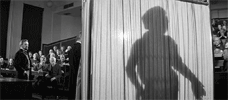
The Elephant Man
1980 -

My Bloody Valentine
1981 -

Who Can Kill a Child?
1976 -

Cannibal Holocaust
1980 -

Let Sleeping Corpses Lie
1974 -

John Carpenter’s Vampires
1998 -

Jaws 2
1978 -

A Warning to the Curious
1972 -

Wolf
1994 -

The Survivor
1981 -

Cannibal Ferox
1981 -

The Nights of Terror
1981 -
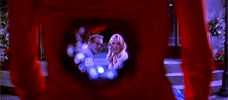
Death Becomes Her
1992 -

Alice, Sweet Alice
1976 -

Body Double
1984 -
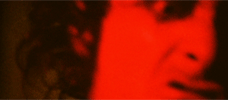
Invocation of My Demon Brother
1969 -
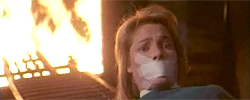
Phantasm II
1988 -

Emanuelle and the Last Cannibals
1977 -

The Wicker Man
1973 -

Maniac Cop
1988 -
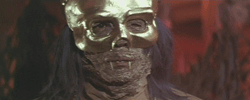
The Legend of the 7 Golden Vampires
1974 -
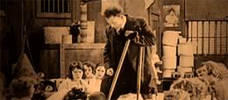
The Penalty
1920 -

Boxing Helena
1993 -

Chew on This
2005 -

Night of the Creeps
1986 -

Night of the Lepus
1972 -

Near Dark
1987 -

Army of Darkness
1992 -

The Brood
1979 -

The Lift
1983 -

Amsterdamned
1988 -

Silent Witness
1999 -

The Shaft
2001
We don’t do comments anymore, but you may contact us here or find us on Twitter or Facebook.



